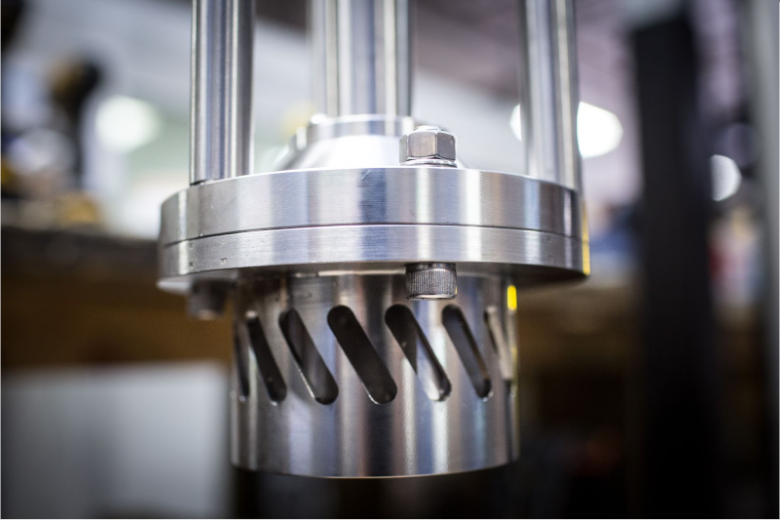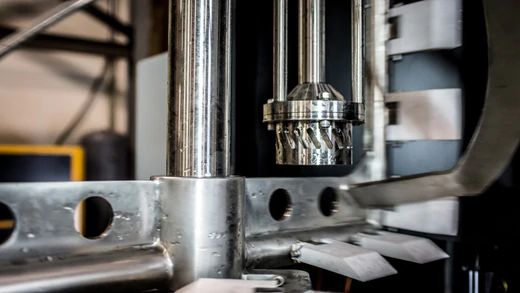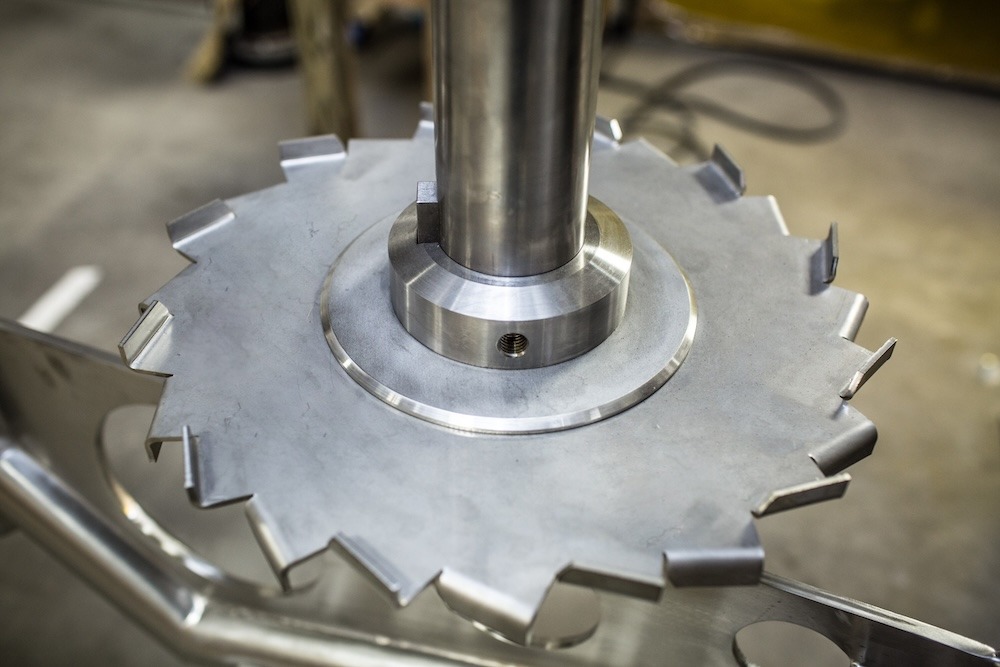The Basics of Rotor Stator Mixers & High Shear Mixing
In the world of industrial mixing, efficiency and quality are paramount. Among the available mixing equipment, rotor stator mixers stand out for...
4 min read
MXD Process Nov 27, 2023 2:05:50 PM
Essentially all industrial mixing has one goal -- creating consistent, thoroughly blended products. However, all mixers aren't created equal, so in some cases, one mixing type is better than the other.
In this blog, we'll discuss high-shear mixing vs. low-shear mixing and review when one method is preferred.
High-shear mixers blend, disperse, or emulsify materials. These mixers send substances through a narrow gap between a high-speed turning rotor and a stationary stator. This gap creates shear force and subjects the substances to intense stress.
As a result, this process disrupts the particles and droplets in the substance, leading to a finer and more homogenous mixture or emulsion.
There are two main types of high-shear mixers -- batch and in-line high-shear mixers.
Batch processing mixes a defined amount of material in a single vessel for a set period of time, it’s a very straightforward process. Batch mixing tends to work in applications where small-scale production is needed or there’s a frequent need for customization.
Additionally, batch processing offers ingredient flexibility, and simple quality control by testing single batches, as well as a simple design and operation.
On the other hand, in-line mixing involves continuously taking in ingredients and mixing as they enter the mixer. In-line mixing allows for efficiency and consistency but isn’t the best choice if contamination is a concern.
High-shear mixers offer several advantages due to their design and technology. The four most prevalent advantages of high-shear mixing include:
High-shear mixers use powerful shear force to evenly distribute ingredients, which minimizes batch differences and increases the quality of each mix -- even with highly viscous or difficult ingredients.
Additionally, high-shear mixers require less time and energy to achieve the desired result compared to low-shear mixers. This leads to increased efficiency and reduced production time, which ultimately translates into cost savings for businesses.
It's widely known that high-shear mixers can handle extremely viscous materials, such as food products (syrups and jams), cosmetics, chemicals, and many others. However, these mixers can also handle varying viscosities, making them adaptable to most applications.
This ability is largely due to the shearing mechanism of high-shear mixers. The rapid movement between the rotating and stationary components creates intense shear that easily breaks down agglomerates, distributes particles evenly, and reduces particle size.
When it comes to the future of your business, it isn't easy to predict what's going to happen next. It's essential to have equipment that can adapt to business expansion or lower production levels.
High-shear mixers excel in scalability. These mixers can handle a diverse range of quantities, from minimal batches in a lab setting to massive production volumes in industrial environments. For example, some designs offer the flow capacity of up to 250 gallons per minute.
As a result, high-shear mixers tend to be an excellent investment, as they grow and adapt with the business over time.
Every high-shear mixer has the ability to change out the mixing impeller and customize your flow vs. shear need. If you have a project needing something extremely high-shear, it’s as simple as switching out the head on the rotor-stator.
While high-shear mixers are found in nearly every industry, there are three industries that they’re widely used in.
High-shear mixers can be used for several different chemical processes and outcomes including:
Low-shear mixers gently blend and mix substances, primarily used when the process requires a delicate touch to prevent damage to the components in the mixture.
This type of mixer operates at lower RPMs and prioritizes fluid flow over shear force, reducing the forces and stress exerted on the materials while still providing a thorough mix.
In some cases, maintaining the original properties of the ingredients is vital, such as in the food and beverage industry. When mixing salads, yogurts with fruit pieces, or chunky soups, it’s important to keep the individual components intact to preserve texture and appearance. Low-shear mixers are perfect for this situation as they protect the integrity of the particles.
The most prevalent type of low-shear mixers are portable mixers. Portable mixers are highly versatile and are designed for ease of mobility. They typically use a mixing propeller, which is used for general-purpose mixing, or a hydrofoil impeller, which is more efficient for very low-shear applications.
The design of these mixers is essential to minimize shear stress and preserve ingredient integrity, yet still thoroughly mix. Portable mixers come in several different styles including tri-clamp mixers, drum-mounted mixers, clamp-mount mixers, or several other types.
Aside from the well-known advantage of gently mixing ingredients, there are several other benefits of low-shear mixing, including:
When compared to high-shear mixers, low-shear mixers offer much lower energy consumption. Low-shear mixers operate at slower mixing speeds, which reduces their energy use, making them an energy-efficient option.
Since low-shear mixers work gently to combine ingredients, they don't create a lot of noise. This feature is especially useful for facilities where noise levels must be kept to a minimum, or to overall improve the working environment of operators.
Low-shear mixers gently mix, which doesn't cause heavy wear and tear on the equipment. With less stress, maintenance doesn't need to be done as often and low-shear mixers tend to last longer.
There are many industries that require low-shear mixing; here are the 5 most common low-shear mixing applications:
Food & Beverage: Incorporating flavors or concentrates, distribution of solid ingredients into liquid (solid suspension)
Brewing & Distilling: Circulation of mash to prevent burning, agitation of flavored beverages to keep ingredients incorporated
Wastewater: Blending of neutralizers
Chemicals: Pre-agitation for raw ingredients in storage before processing
Pharmaceutical & BioTech: Incorporation of active ingredients and fragrances into creams and lotions
Low-shear mixers can be used for several different chemical processes and outcomes including:
Even though all mixing has the same end goal – thoroughly blending the ingredients to get a final product – mixers aren’t all the same. Depending on your project, materials required, viscosity, and several other factors, one mixer type may be better than the other.
Before making your decision, it’s important to reach out to a knowledgeable expert on mixers to make sure you’re getting the best equipment possible. Contact our team at MXD Process to get started with a ShearPro mixer today.

In the world of industrial mixing, efficiency and quality are paramount. Among the available mixing equipment, rotor stator mixers stand out for...

While you may be familiar with industrial mixing, high-shear mixing is a specific category in industrial mixing with its own unique functions. High...

High-shear mixers play a role in many industries to precisely blend, emulsify, and disperse materials. This powerful equipment mixes ingredients to...